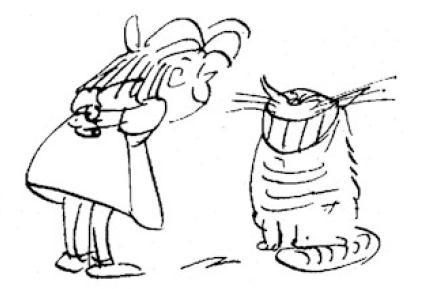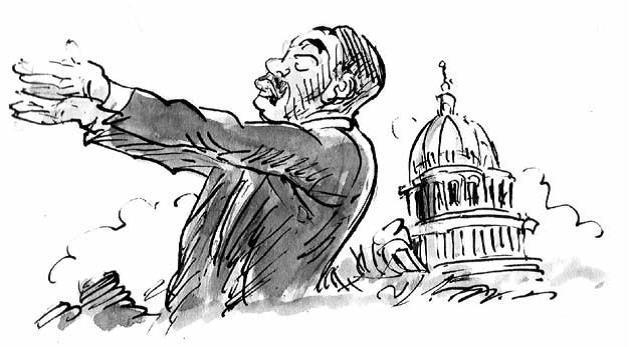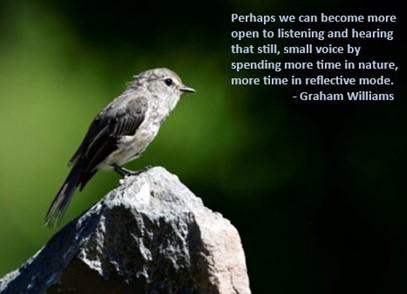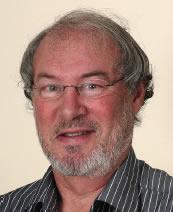To Hear is to See
(A version of this article first appeared in SA Coaching News, Vol.3 Issue 1. January 2021)
“Everyone has been made for some particular work, and the desire for that work has been put in every heart”- Rumi.
It’s always a good time to try and make sense of where we stand now (and story can contribute to sense-making), to contemplate alternative possible futures and a preferred future and develop our individual story and images of the future: our vision.
The topic of a personal vision – one that provides meaning and purpose, ensures that we know why we exist and therefore are not steered off course by every new wind that blows as we move forward, but instead are sure and resilient.
But here’s the rub: we live at a time where existential psychiatrist Irvin Yalom’s four givens of life seem more present than ever: the scary aspects that go with the developmental appeal of meaninglessness, freedom, death and alone-ness or isolation. Also, in these unprecedented times there seems to be little room for those who know a lot about a little, less room for those who know a little about a lot, and an increasing call for those who know lots about lots. Trouble is – even if we fit the last-mentioned category, then we still don’t know a lot – which is far more than what we do know (or think we know)!
Sure, the amount of data we can access is growing, as is information – albeit to a lesser extent. Even less available is practical knowledge and real understanding. And wisdom is in short supply. We just don’t know the unknown, the future.
So how to proceed?
As a starting point we need to see that vision is vital
Alice asked: “Would you tell me which way I ought to go from here?”
“That depends a great deal on where you want to get to” said the cat.
“I don’t know where” said Alice.
Then it doesn’t matter which way you go” said the cat. (Carroll, L. 1977)

Without a vision we are lost, lose direction and focus…
Leave blow pipes (pea – shooters), paper balls, sponges in a conference room, during a tea or lunch break. When the participants return, in the absence of any other instruction, it will not be too long before these objects are thrown around, or at other people – with increasing intensity and hilarity. No matter how senior the participants.
After a while, without saying a word, place a picture of a target on a wall and immediately attention and energy is directed at it – in the form of the pea shooters, the balls and sponges, of course! As soon as a single, clear target is shown and seen, there is a firm, definite focus.
Try to put together a jigsaw puzzle without looking at the picture (the end result that you are trying to achieve). Difficult. We need to picture where we are going. Frankl draws on his Oswieciem (Auschwitz) concentration camp experiences during the 2nd world war to explain that people need meaning and a future to hang on to (especially when the going is tough): “Any attempt to restore a man’s inner strength in the camp had first to succeed in showing him some future goal”. (Frankl, V. 1985)
Ex World heavyweight boxing champion Muhammad Ali put it this way (The second line of his couplet is seldom quoted and speaks of the veracity of vision):
“Float like a butterfly, sting like a bee.
Your hands can’t hit what your eyes can’t see”.
Recognise that true vision for many follows hearing the ‘Divine’ (however you understand or experience this)
Studdert Kennedy was an army chaplain and poet who bucked the incompetent bureaucracy that resulted in so many First World War casualties and wasted lives. We told his story in a previous article in this series – on listening with love.
Mother (Saint) Teresa heard a still, small voice within speak gently to her in a dream on a train ride, and her vision from that day forward was to serve the poorest of the poor. This led to her setting up the Missionaries of Charity in Calcutta. As Rumi puts it, she heard from “the one who talks to the deep ear in your chest”.
“When you are inspired by some great purpose, some extraordinary project, all your thoughts break their bonds; your mind transcends limitations, your consciousness expands in every direction, and you find yourself in a new, great and wonderful world. Dormant forces, faculties and talents become alive, and you discover yourself to be a greater person by far than you ever dreamed yourself to be”. (Rutte, M. 2006)
Vision gives purpose. Without it we face ennui. If we think our work and our life has no meaning, feel jaded, nothing new and exciting ever happens, we are dissatisfied, unfulfilled, aimless, listless… If our lives are swamped by burdens, responsibilities, chores that are mundane and routine, and we stay in the in the drone zone… then the dis-ease we’re suffering from is the absence of purpose.
Establishing our deep inner reason for existing is the most important work any of us can do.
How can we hear better in order to see more clearly?
Things that you may wish to weigh up:
- In this age of electronic interactions, it seems that our attention-spans and retention-spans are reducing. Perhaps we can become more open to listening and hearing by spending more time in nature, more time in reflective mode. At such times listening blockages within are more likely to reveal themselves so that we can bypass or remove them: they may be hurts, resentments, blind spots, self-defeating attitudes, limiting beliefs and unconscious biases.
- Avoid being too cerebral and analytical. Allow for and explore the possibility of heart-knowing. We can learn from the vision quest rite of passage practice, associated rituals and “crying for a vision” ceremonies that is a part of Native American Indian culture – and learn to hear from a wider reality than that which is confined to our conscious awareness.
- Be patient. Having a clear vision – purpose – calling is as much about being as it is about doing. If you haven’t yet figured it out, don’t become frenetic and anxious. There is no quick fix: “The supreme achievement of the self is to find an insight that connects together the events, dreams, and relationships that make up our existence“. (Baillas, L. 1986) We are spoken to at different times in our lives, and in many different ways. (And if we hear we will see):
- Consider if what you are doing right now is your purpose (calling) but you are not seeing it. Elle Luna explores the differences between a job (“something typically done from 9 to 5 for pay”), a career (“a system of advancements and promotions over time where rewards are used to optimize behavior”), and a calling (“something that we feel compelled to do regardless of fame or fortune”). (Luna, E. 2015)
A man questions three workers at a building site. “What are you doing?”
The first answers, “I’m laying bricks”.
The second, “We’re building a wall”.
The third, “We’re creating a wonderful cathedral to the glory of God”.
- Some may wake up after a dream, suddenly aware of their life purpose, and of the legacy they would like to leave. Others undergo a life crisis or an experience (physical, intellectual, emotional, social, spiritual) which confronts them with a need or cause that they were not previously aware of and triggers their now-uncovered purpose. Their own trauma, addiction, life-threatening illness, event or status-change (for example motherhood, redundancy, crippling accident) gives rise to a conviction to reach out, assist and support others who are in the same boat.
- Yet others have their purpose gradually unfold over the course of their life as they mature. Sometimes our giftedness or calling is pointed out by someone else: they see what we don’t yet see.
- And for some, when the time is right, an exercise to determine an embedded motivational pattern, conducted by someone competent in this area, may be worthwhile. Elements may include a recurring motivational thrust, preferred subject matter, abilities usually brought to bear, relating preferences, typical trigger circumstances, driving values. (Dr Martin Luther King’s familiar and inspiring speech, given nearly 50 years ago, “painted the picture of a new, more just and loving society scarcely imagined by the American people at that time” and enabled listeners to visualise these values. “Visions themselves are based on deep values”. (Zohar, D. and Marshall, I. 2004)

In 1972 Trina Paulus wrote and illustrated the parable Hope for the Flowers, which beautifully illustrates how values may lead us to discovering our purpose and meaning in life. Two caterpillars, Stripe and Yellow, in their striving for success, climb a kind of corporate “caterpillar pillar” to find that there is nothing at the top. In the end, surrendering to the cocoon, they finally fly, and become what they were meant to be. (Paulus, T. 1972
Good luck as you reflect, listen, hear and see as you continue your life journey.

Bibliography
Baillas, Leonard J. (1986) Myths, Gods, Heroes, and Saviors Twenty-Third Publications
Carroll, Lewis (Rev. Charles Dodgson) (1977) Alice’s Adventures in Wonderland MacMillan
Frankl, Viktor E. (1985) Man’s Search for Meaning Basic Books NY
Horgan, John (2018) David Bohm, Quantum Mechanics and Enlightenment Scientific American. Cross-Check
https://blogs.scientificamerican.com/cross-check/david-bohm-quantum-mechanics-and-enlightenment/
Luna, Ella (2015) The Crossroads of Should and Must: Find and Follow Your Passion Workman Publishing Co. Inc. NY
Paulus, Trina (1972) Hope for the Flowers, A Newman Book, Paulist Press, NY
Rutte, Martin (2006) The Work of Humanity: project heaven on earth citing Patanjali (in Seeking the Sacred: leading a spiritual life in a secular world. (ed Mary Joseph) ECW Press, Toronto, Canada
Tafler, Afshan (2019) How Your Heart May Be Your Wisest Brain June 27, 2019
https://unyte.com/blogs/news/how-your-heart-may-be-your-wisest-brain
Tillich, Paul (2000) The Courage to Be, Yale University Press, New Haven
Zohar, Danah & Marshall, Ian (2004) Spiritual Capital Bloomsbury
Illustrations
Alice and the Cheshire Cat Tony Grogan
Flooded Communication Trench In the Public Domain
Martin Luther King Tony Grogan
Singing bird Photograph by Jacques Myburgh, SA Coaching News

About the Author
Graham Williams is an executive coach and management consultant who lives in Cape Town, South Africa. He has worked in over 40 countries in a variety of sectors, authored 9 business books and is a Management Contributor for 12Manage, the world’s #1 management network.
Graham uses narrative, anecdote, metaphor, archetypes, poetry, imagery and conversations in his work. He is passionate about facilitating healing and wholeness in organisations and their members. And is often asked to conduct workshops for coaches on competency development and application areas suitable for the effective use of story, and the powerful possibilities inherent in story.
In this six-part series Graham shares his insights into a number of the key skills required by modern-day coaches.
He may be contacted at [email protected]
Want to read more articles like this? Check out our Author Speaks page, here you will find more such content.





